#auslan
Text
CREATING AUTHENTIC DEAF AND HARD OF HEARING CHARACTERS: A WRITER'S JOURNAL
Introduction
Creating authentic characters in your writing is essential for engaging storytelling, and this includes characters who are deaf or hard of hearing. To craft a character that accurately represents this community, it's crucial to do your research, gain a deep understanding of their experiences, and portray them with sensitivity and respect. In this journal, we'll explore how to write a deaf or hard-of-hearing character, including key information and preparation steps.
Understanding Deaf and Hard-of-Hearing Characters
Research: Start by researching deaf and hard-of-hearing individuals' experiences, challenges, and culture. Read books, articles, and personal stories, and watch documentaries or interviews featuring members of the Deaf community.
Consult with Experts: Reach out to members of the Deaf community or experts in Deaf studies to gain insights into their experiences. They can provide invaluable guidance and help you avoid common misconceptions.
Diversity Within the Community: Understand that the Deaf and hard-of-hearing communities are diverse. Some individuals communicate using sign language, while others rely on lip-reading, cochlear implants, or hearing aids. Be aware of these differences when creating your character.
Character Development
Backstory and Identity: Consider your character's background. Were they born deaf, or did they become deaf later in life? How do they identify within the Deaf community? Understanding their identity and experiences will shape their character.
Language and Communication: Decide how your character communicates. Are they fluent in sign language, or do they primarily rely on lip-reading and spoken language? Their communication style will influence their interactions with other characters.
Cultural Awareness: Explore the cultural aspects of the Deaf community. Understand the importance of Deaf culture, including its history, art, and values. Incorporate these elements into your character's life when relevant.
Writing Tips
Dialogue and Communication: When writing dialogue for a deaf or hard-of-hearing character, be mindful of their unique communication style. Use visual cues, body language, and facial expressions to convey emotions and context.
Access to Information: Consider the challenges your character may face in accessing information. This could involve issues with closed captioning, subtitles, or accommodations in educational or work settings.
Social Interactions: Depict social interactions realistically. Show how your character navigates conversations, group dynamics, and social events within their community and with hearing individuals.
Preparation
Sensitivity Readers: Consider hiring sensitivity readers who are part of the Deaf or hard-of-hearing community to review your work and provide feedback. Their insights can help you avoid stereotypes and inaccuracies.
Learn Sign Language: If your character uses sign language, take the time to learn at least basic signs. This will not only enrich your writing but also demonstrate your commitment to accuracy.
Beta Readers: Seek feedback from a diverse group of beta readers who can assess the authenticity of your character and offer constructive criticism.
Engage with the Community: Attend Deaf community events, workshops, or online forums to immerse yourself in the culture and better understand the perspectives and experiences of deaf and hard-of-hearing individuals.
Creating a deaf or hard-of-hearing character that resonates with readers requires dedication, empathy, and thorough research. By following these steps and embracing the rich culture and diversity of the Deaf community, you can create a character that is not only authentic but also promotes understanding and inclusivity in your writing. In addition, when writing dialogue for your deaf or hard-of-hearing character, remember:
It's important to clarify why, when writing dialogue for a deaf character, you should continue to use structured English grammar and not sign language structured grammar.
Maintaining Structured English Grammar:
Readability: Writing in structured English grammar ensures that the text remains accessible and comprehensible to all readers, including those who may not be familiar with sign language or Deaf culture. It avoids potential confusion that could arise from using sign language grammar in written text.
Universal Understanding: English is a global language, and adhering to its grammar rules allows for a wider audience to understand and engage with your story. Sign language grammar varies between different sign languages, making it less universally applicable in written form.
Respect for the Medium: While sign language is a rich and expressive mode of communication, it is primarily a visual and gestural language. Attempting to replicate sign language grammar in written text can be cumbersome and may not fully capture the nuances of sign language communication.
Balance of Realism and Readability: Striking a balance between authenticity and readability is crucial in storytelling. Maintaining structured English grammar while depicting a deaf character's interactions helps convey the character's experience without compromising the reader's ability to follow the narrative.
As an illustration, consider the following text:
Dialogues with Descriptive Sign Language:
Sarah greeted John with a warm smile, her hands moving gracefully as she signed, "Hi, how are you?"
John returned the greeting in sign language, his expressions mirroring his words. "I'm good, thanks. Did you see the new movie?"
Sarah's eyes lit up as she signed back enthusiastically, "Yes, I loved it!"
In summary, using structured English grammar when writing dialogue for a deaf character is a practical and respectful choice that ensures your writing remains inclusive and accessible to a broad audience while still authentically representing the character's identity and experiences.
Furthermore, it's essential to avoid creating a character who is overly perfect or one-dimensional. In real life, we understand that everyone has imperfections and complexities, regardless of whether they are deaf or hard of hearing. Therefore, it's entirely acceptable to depict your character as a villain with a hearing issue if that aligns with your storytelling goals.
#writing deaf characters#hard of hearing#writing tips#writing resources#sign language#bsl#asl#auslan#fiction writing#building a character#writing guilde#writing characters with disibilities
1K notes
·
View notes
Photo

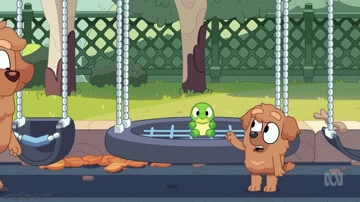
Deaf/Sign Language rep in recent cartoons!
#if there are other recent examples chances are i don't watch those shows :')#original post#gifs#craig of the creek#craig of the creek jackie#bluey#bluey spoilers#dougie#bluey dougie#gif sources: craig of the creek s4e21/bluey s3e30#sign language#australian sign language#black american sign language#asl#auslan
2K notes
·
View notes
Text
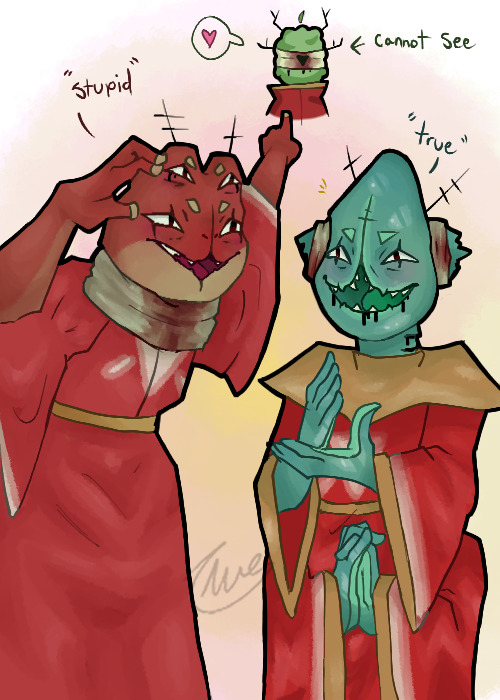
They are gossiping..!
-
-
-
-
Heket can't talk very well, and Kallamar can't hear very well...
Spoiler for COTL post-game
I see lots of people represent mutism for Heket since, well, her throat is ripped out. But I see less deaf representation for our dear Kallamar, who's ears have been demolished. I feel like the two both sign, and would grow closer because of it.
I love to think they gossip to one another through sign language, but mostly about Leshy who can't see them very visibly talking about him lol
Anyway, the signs for each read "stupid" and "true/correct" (Auslan).
#cult of the lamb#cotl fanart#cult of the lamb art#character art#artists on tumblr#fan art#cult of the lamb leshy#cotl leshy#cult of the lamb heket#cotl heket#cult of the lamb kallamar#cotl kallamar#cotl headcanons#cult of the lamb headcanons#auslan#bishop leshy#bishop heket#bishop kallamar#the lamb studies sign as well to try to understand#the lamb thinks they are calling leshy smart#we love a happy family#small artist#art blog#artist on tumblr#reblogs appreciated#reblog
120 notes
·
View notes
Text
Writing Signed Languages in Fanfics
so i recently got into learning ASL (which is amazing!! i love it so much!!) and am planning to reference it when writing a Legend of Zelda fanfic, like certain facial expressions or how quickly/forcefully a sign is made, etc.
the thing is, since i'm hearing, i'm wondering if those of you who are d/Deaf or HoH can give me some tips on how to write a signing character, like things you wish you'd see in fanfics, or things you wish writers would stop doing.
also, to show that the MC is communicating in another language other than English, i'm thinking of using these Japanese 「quotation brackets」. thoughts?
#american sign language#asl#sign language#bsl#auslan#british sign language#Australian sign language#deaf culture#actually deaf#actually hoh#<- plz lmk if i should remove the last tags--i just want this to be seen#as an audhd person i'm fine with ppl using the audhd tags to get our attention but idk if y'all are cool w that so plz kindly lmk if not!#reyna's ramblings
78 notes
·
View notes
Text
procrastination
just learned the auslan alphabet instead of studying for my science test tmr about cells and the respiratory, digestive and muscular system that I’m probably going to fail 👍
#studyblr#test#school#science#auslan#biology#school life#procrastination#i'm procrastinating#i need to stop procrastinating#i procrastinate too much#procrastinator
44 notes
·
View notes
Text
March-April 2023: Bluesky, Barbie bouba/kiki, and Bea Wolf
My newsletter for March-April 2023: Bluesky, Barbie bouba/kiki, and Bea Wolf
In April, I made an account on bluesky and enjoyed some wordplay there, which is still (so far) going strong as a twitter replacement.
The main episodes of Lingthusiasm these two months were Bringing stories to life in Auslan – Interview with Gabrielle Hodge, which was our second bimodal bilingual episode, this time in Auslan and English, as well as Tone and Intonation? Tone and Intonation!
The…
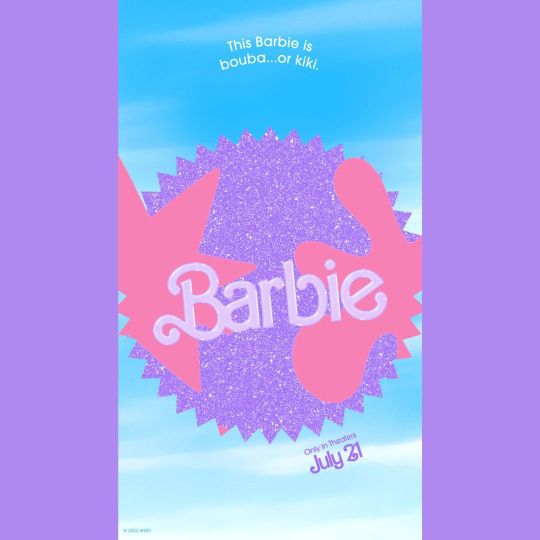
View On WordPress
#Auslan#blog#bluesky#book reviews#bouba kiki#Gabrielle Hodge#internet linguistics#interviews#kiki bouba#lingthusiasm#linguist humor#PIE day#podcasts#speculative fiction#tweets#twitter
27 notes
·
View notes
Text

#transgender#nonbinary#queer#gay love#lesbian#bisexual#pansexual#polyam relationship#sign language#australia#auslan
56 notes
·
View notes
Text
I was going to make a post about the differences between the Auslan signs for ‘hearing’ and ‘d/Deaf’ because I often sign that I’m hearing but have people not understand and presume I’m deaf potentially because they look similar.
The sign I had been taught to use for hearing was:


[ID: a person touching their index finger to their ear, and then to their lips]
I have since learnt courtesy of Signbank that while this is the sign for hearing, more accurately it is the sign for someone who is hearing And speaking. So as someone who is hearing and mute, I am better off self describing as:

[ID: a person pointing to their ear with their index finger. /end ID]
“Hearing: pointing three times to your ear with your index finger.”
Hope this is helpful to someone :) (smiley face).
#Also if anyone knows how to make gifs I would be very grateful#Auslan#Australian sign language#hearing#mute#nonverbal
13 notes
·
View notes
Text
does anyone find acc button board things frustrating like me? maybe it's because of having to learn all over again for the third time how to communicate. maybe it's because english i just already hate a lot. maybe it's the visual of how many options and stuff or not knowing what i want to put on it. maybe it also feels a bit infantalising because of the default images and/or internalized ableism. idk.
i just like sign better. but no one knows it. very few people are willing to learn even the basics :c
10 notes
·
View notes
Text
also it's really funny because my post specifically about australian indigenous place names was the one everyone was talking about america on, and then on my post about sign language in general and not everything being ASL almost everyone is talking about Auslan. that's great i think that rocks.
12 notes
·
View notes
Video
youtube
Lingthusiasm Episode 78: Bringing stories to life in Auslan - Interview with Gabrielle Hodge
Communicating is about more than the literal, dictionary-entry-style words that we say -- it’s also about the many subtle ingredients that go into a message, from how you keep your audience in mind to how you portray the actions of the people you’re talking about.
In this episode, your host Gretchen McCulloch interviews Dr. Gabrielle Hodge, a deaf researcher and writer based in Melbourne, Australia. She specialises in research relating to d/Deaf people, signed languages, and communication, and has worked with Auslan and British Sign Language (BSL) in Australia and the UK. We talk about Gab’s work analysing how people tell stories using a mixture of conventional signs (such as “book”) and enactment, aka showing what another person or character did using your body, such as depicting how someone is carrying a heavy book. We also talk about collaborations in multiple countries and assessing what makes a translation accessible to deaf people.
We’re excited to bring you this bilingual episode in Auslan and English! For the full experience, make sure to watch the captioned video version of this episode at youtube.com/lingthusiasm (and check out our previous bilingual episode in ASL and English with Dr. Lynn Hou while you’re there).
Read the transcript here.
Announcements:
Since we filmed this interview, Gab has accepted a position as Senior Lecturer in Sign Language Linguistics at the University of Edinburgh. We’re excited to see more great work from her there!
In this month’s bonus episode we get enthusiastic about four science fiction books/series we're read recently that project interesting future versions of English. We also talk about reading books set in the future but written in the past, and how several of these books now exist in a future that's in some ways more similar to their imagined futures than the time when they were being written.
Join us on Patreon now to get access to this and 70+ other bonus episodes, as well as access to the Lingthusiasm Discord server where you can chat with other language nerds. It’s thanks to our patrons that we’re able to occasionally bring all of you bilingual video episodes like this one.
Here are the links mentioned in the episode:
Gabrielle Hodge on Twitter
Gabrielle Hodge’s website
Previously in bilingual Lingthusiasm episodes (ASL and English): ‘Villages, gifs, and children: Researching signed languages in real-world contexts with Lynn Hou’
The Auslan Corpus
Deafness Cognition And Language research centre
The BSL Corpus
You can listen to this episode via Lingthusiasm.com, Soundcloud, RSS, Apple Podcasts/iTunes, Spotify, YouTube, or wherever you get your podcasts. You can also download an mp3 via the Soundcloud page for offline listening.
To receive an email whenever a new episode drops, sign up for the Lingthusiasm mailing list.
You can help keep Lingthusiasm ad-free, get access to bonus content, and more perks by supporting us on Patreon.
Lingthusiasm is on Twitter, Instagram, Facebook, Mastodon, and Tumblr. Email us at contact [at] lingthusiasm [dot] com
Gretchen is on Twitter as @GretchenAMcC and blogs at All Things Linguistic.
Lauren is on Twitter as @superlinguo and blogs at Superlinguo.
Lingthusiasm is created by Gretchen McCulloch and Lauren Gawne. Our senior producer is Claire Gawne, our production editor is Sarah Dopierala, and our production assistant is Martha Tsutsui Billins. Our music is ‘Ancient City’ by The Triangles.
This episode of Lingthusiasm is made available under a Creative Commons Attribution Non-Commercial Share Alike license (CC 4.0 BY-NC-SA).
#language#linguistics#lingthusiasm#episodes#episode 78#interview#video#Auslan#BSL#british sign language#signed languages#sign language linguistics#storytelling#enactment#translation
57 notes
·
View notes
Text

Goldielocks and I did a lesson in Auslan which is Australian sign language. Goldielocks enjoyed the lesson and enjoyed guessing the words that the teacher was finger spelling to us. The teacher gave us this this chart to practice finger spelling.
Image Description:
Goldielocks is a golden furbling. Who has golden ears, golden furby, a golden face plate, golden eyelids and golden feet. Goldielocks has a orangey yellow beak and a small red tongue. She had black pupils with two white stars in each pupil. In front of Goldielocks is a white A4 piece of paper with the alphabet of finger spelling on it.
59 notes
·
View notes
Text
Despite the angle I'm actually feeling really cute for once
The sign is bad in Auslan for those interested
7 notes
·
View notes
Text
so we're learning auslan (australian sign language) and y'know we're still working on feeling confident in using it in public. we CAN, we know so much at this point (we've just finished our first term of cert 3). anxiety just makes it so hard to use.
however, we all love listening to music, so we've started signing along to songs. we get so engaged in the song and the lyrics and the signing that anxiety completely disappears. ive stopped giving a shit about how people are looking at me and judging me (mostly).
music is a huge soother for a lot of us, and now signing is too. fuck everyone else in public. im gonna sign on the train, on the bus, as im walking. as much as i fucking want. im gonna create full emotional pieces as i sign to music and im not gonna care if people think im weird.
keep in mind im never getting in anyones way, or making a dramatic scene. im taking up the same amount of emotional and physical space as i usually do. im not bothering anyone.
if people approach me or if i get obvious weird looks, i know that im using a beautiful fucking language and they just dont understand what im saying. or if they do know auslan or recognise what im doing is auslan, ive met someone who i can talk to in a different language. i can talk about how im learning and how music is so important to me, i love the meaning behind the songs i listen to, and i adore translating that beauty into a different language.
do it. be weird in public. dress how you want. use mobility aids. i dont care. stim, cry, hum, whatever it may be. as long as you aren’t causing a legitimate disturbance (threatening the safety of yourself or others, basically not just what neurotypicals view as a disturbance), do what you like.
you are harming no one, enjoy living. make going out fucking bearable. i believe you'll find peace.
- virgil (he/him)
#endos do not touch this post#anti endo#signing community#auslan#australian sign language#be weird#especially in public#you aren’t hurting anyone#stimming#virgil rambles
3 notes
·
View notes
Text

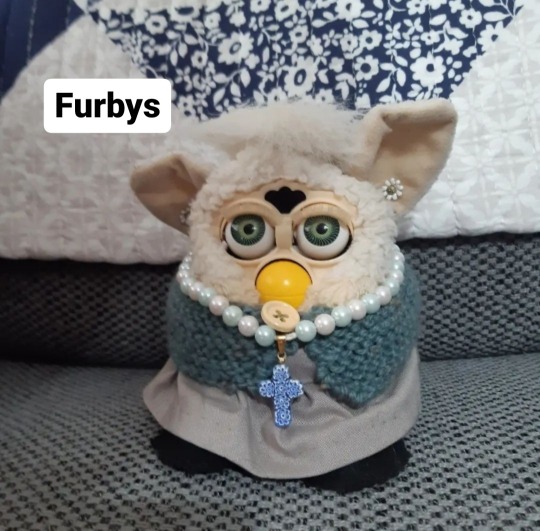
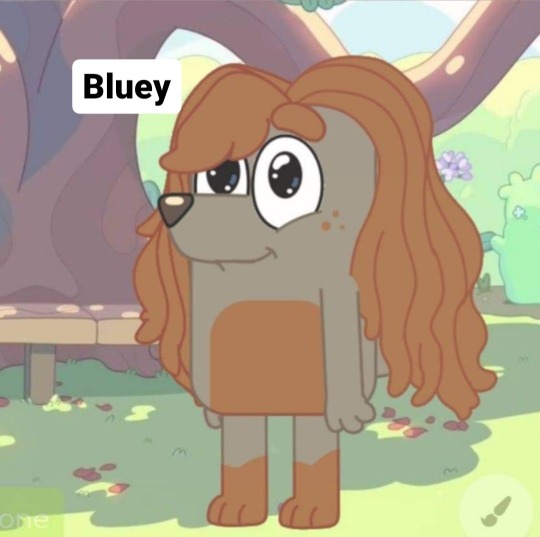




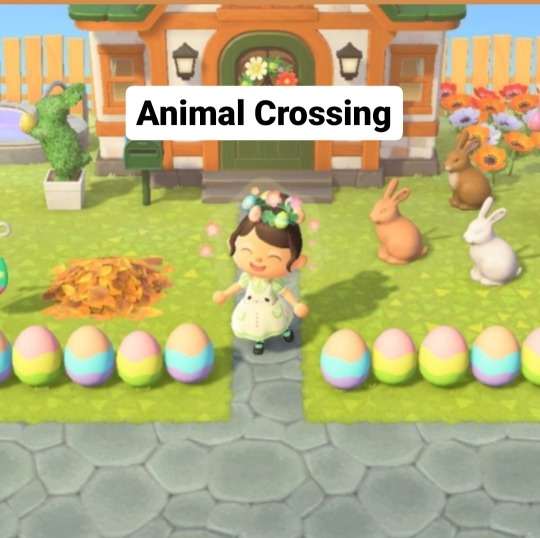

Autistic April Day 1: My Special interests
Image Descriptions:
1: "My special Interests" is written in black text on a rainbow background.
2: Boo is a 1998 furby with a whie tail and tuft of hair on her head. She has white ears. Her fur is white wool except for on her belly where it is cream white fur. Her face plate and eyelids are white. Her eyes are blue and his beak is a orangish yellow colour. Her feet are both white and she is wearing a a daisy earring on each ear. The daisy earrings have a yellow centre with white petals. She is a string of pearls around her neck. The pearls are pale blue and white. There is also a blue and white cross charm on the neck lace. She is also wearing a dark green knitted shawl that is knitted in garter stitch and is fastened up with a light brown button. Boo is wearing a grey shirt and a pair of black shoes with buckles. There is black text above Boo that says "furbys"
3: This is a picture of what I would look like if I was a Bluey character. This is a dark brown cartoon dog infront of a tree. She has long brown hair and freckles on her face. Her belly and feet are a different shade of brown. There is black text that says "Bluey" near her.
4: There is an infinity symbol that is half red and half gold on a dark brown background. "Autism" is written in black text on the picture.
5: There is a rectangular wooden board on a table the shows how to finger spell the word "Auslan" There is black text on the picture that says "(Australian Sign Language)"
6: Sir Quackington and a yellow rubber ducky. He is wearing a black top hat and a black knitted scarf around his neck. Under him is a note written in black pen. The note says "you have been ducked! Dear Jeep owner allow me to introduce myself. My name is Sir Quackington and I am pleased to be acquainted with you." He is sitting on the bonnet of a white Jeep Wrangler. There is black text on the image that says "duck duck jeep"
7: There is a pair of fingerless mittens that are knitted from various coloured yarn. The is black text that says "textile crafts I spun the wool and knitted these gloves myself."
8: There is a video game animal crossing avatar standing infront of a house. The fence infront of the house is made from large colourful Easter eggs. There is a grey brick path leading up to the front door of the house. Beside the path is a pile of yellow autumn leaves. On the other side of the path there are three rabbit statues. One rabbit is brown, the other is white and the other is brown with a white cheast. My avatar is smiling and has her brown hair done up in a bun. She is wearing a green dress with white overalls over it. There is black text on the image that says "animal crossing"
9:There are a list of prompts for each day of the month for Autistic April. The top and bottom of the image is light purple and the middle part of the image is white with black text on it. The black text says "Autistic April 2024 Prompts: 1: Special interests 2: How you found out you were Autistic 3: your favourite stim 4: alternative forms of communication 5: your favourite fidget toys 6: textures you hate 7: safe foods 8: other disabilities you have 9: LBGTQI+ 10: childhood special interests11: comfort items 12: your favourite Autistic celebrities or characters13: unmasking 14: sensory aids 15: misdiagnosis 16: Autism friendly places 17: Disability support you have received 18: animals 19: favourite thing about being Autistic 20: echolalia 21: idenity first or Person first language 22: the spoon theory
23: colours that represent Autism (not blue) 24: Autistic owned small businesses 25: meltdowns and/or shutdowns 26: Your clothing prefences 27: Self care 28: Relatable Autism memes 29: Accessibility 30: routines" There is an infinity symbol that is half red and half gold on the top right corner of the white section. End Descriptions.
#actuallyautistic#autistic#autism#autismacceptance#furby#allfurby#bluey show#bluey#animal crossing#acnh#knitting#yarn spinning#auslan#duckduckjeep#duck duck jeep
4 notes
·
View notes
Text
i’m trying to learn AUSLAN so if anyone knows any good resources to learn please let me know!!
6 notes
·
View notes